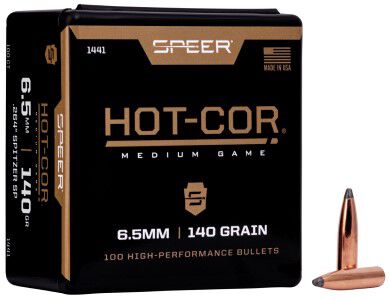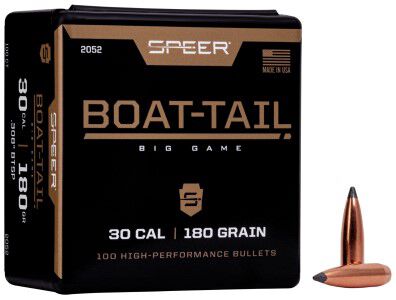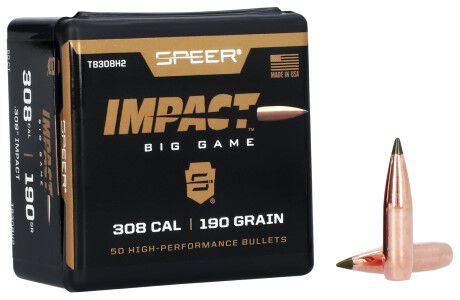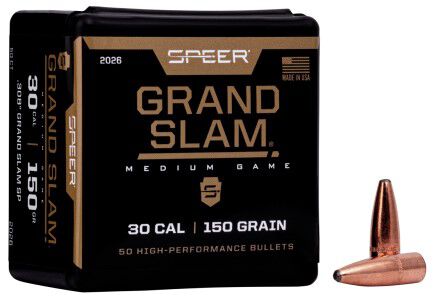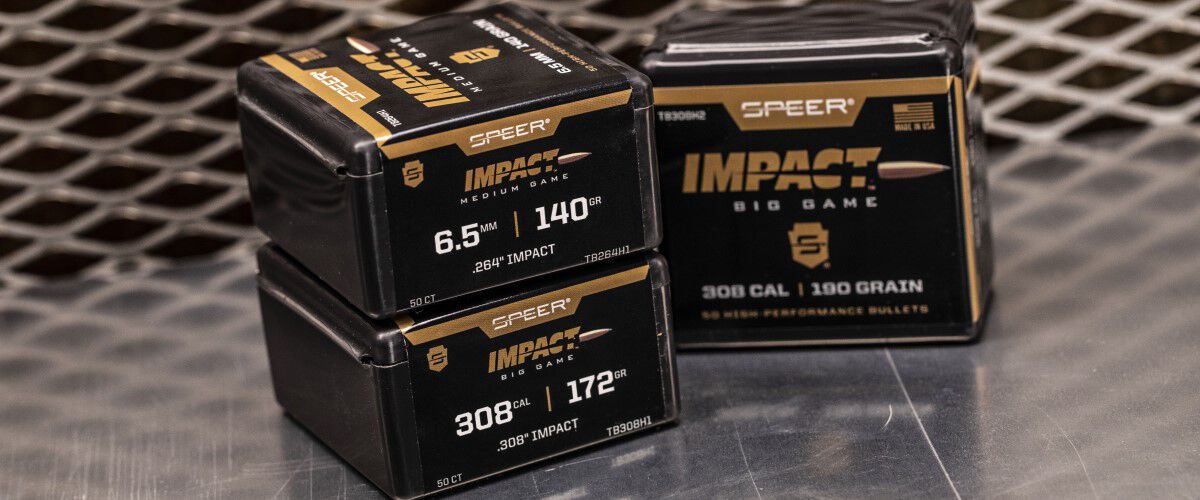
The debate is over: Bullet selection is more important than caliber or cartridge. So, we’ve made it easy by outlining the best bullets for three of North America’s most popular big game animals—deer, elk, and bear.
Best Deer Bullets
This category includes animals ranging from 100-pound Coues deer to muleys topping 300 pounds. The good news is most hunting bullets are designed for deer hunting because deer are the most popular big game animal in North America. They don’t have the same heavy bone structure as a bear or an elk, and they don’t generally require a really tough bullet.
Accuracy is key, so bullets with pointed noses and boat-tails—features that improve aerodynamics—will help buck wind and perform better at long ranges. At moderate ranges, bullets like Speer’s Hot-Cor work exceptionally well. Vernon Speer revolutionized bullet design by pouring molten lead into pre-formed copper jackets, which proved a successful method of bullet production. The result was the Hot-Cor, which offers superb terminal performance at a reasonable price. For most deer hunting situations, the Hot-Cor is an easy and affordable option that will provide the expansion and penetration needed to quickly dispatch the animal.
There are certain instances where improved ballistic performance is key, such as when hunting Coues deer. They live in open desert environments where shots may be long, but these deer are smaller than their whitetail cousins and don’t require a heavy bullet. Bullets like Speer’s Boat-Tail, which features an aerodynamic design that improves long-range performance, are ideal. Boat-Tail bullets have relatively thin jackets, but this is perfect for hunting a light-boned, small-bodied deer that prefers terrain where shots are likely to be long.
Best Elk Bullets
North American elk are substantially larger than whitetail and mule deer. Cows may weigh under 500 pounds, but a big bull might weigh closer to a half-ton, especially a Roosevelt elk from the Pacific Northwest. Elk also have substantially heavier bone structure than deer, so you need a bullet that is up to the challenge.
Lead-core bullets like the Hot-Cor will work well for most elk, particularly if you’re hunting in timber or are exclusively looking for a cow or spike. A quality lead-core hunting bullet placed in the heart-lung area with sufficient energy and velocity will kill any elk, including a big bull, but sometimes you need a bit more weight retention and a higher ballistic coefficient. This is where Speer’s tough Grand Slam bullet shines. Weight retention on the Grand Slam is high thanks to a thicker jacket, and the bullet’s jacket its mechanically locked to the core, preventing separation. When you need deep penetration on heavy game the Grand Slam is a great option, and it’s perfect for cross-canyon shots on any elk.
The the Grand SlamGrand Slam offers many advantages over other bullets. It comes with a sleek profile that allows it to maintain velocity, a key factor to initiate expansion and transfer energy. In addition, the Grand SlamGrand Slam bullets have internal skives (notches) that initiate expansion at lower velocities, which is a key factor when shooting at great distances. Should you hit bone, the the Grand SlamGrand Slam won’t break up, so it’s perfect for long shots on the largest game. It’s probably a tougher bullet than is required for any of the smaller deer species (though it will work), but it’s perfect medicine for a big bull.
Best Bear Bullet
There’s more variation among bears in terms of weight and body size than any other animal on this list. In many areas of the country, the average black bear harvested by hunters weighs less than 200 pounds, but an old, mature coastal brown bear could weigh nearly ten times that.
All bears, regardless of size, create specific challenges for hunters. First, they have thick hides and dense furt that have a tendency to reduce blood trails and make follow-ups more difficult. Bears also have a heavy bone structure, and they can absorb a lot of energy and continue moving. But bears aren’t bulletproof, and in many instances a lead core bullet with moderate expansion and good weight retention is the perfect choice. Hot-Cor bullets are wonderful for black bears over bait, and their expansion creates large wound channels that prevent having to conduct follow-up when shots are well-placed. Just remember bears often have long hair on their bellies, so many guides and experienced hunters recommend shooting behind the front shoulder and slightly higher shot placement than would be required for an elk or deer.
For spot-and-stalk black bear hunts or any grizzly or brown bear hunt you need a bullet that can penetrate heavy bone, massive muscle, and thick hide. In my mind, a tough bullet like the Grand Slam is the perfect option since it will drive deep and retain weight, even in large-bodied animals. The aerodynamic design is also flatter shooting than many rivals and retains downrange energy, and that downrange energy translates to cleaner kills. I also prefer a tougher bullet when shooting faster magnums because there’s less chance of bullet break-up at closer ranges.
Best All-Around
And if you hunt all three of these species and target them from wide open spaces to dense timber, there’s no longer a need to make tradeoffs or choose a different bullet for every hunt. Speer Impact combines the best of both worlds with bonded construction, a sleek profile and the Slipstream polymer tip. Combined, these features allow the bullet to hold together on close-range hits on tough animals, expand reliably at long range and provide extreme accuracy.
